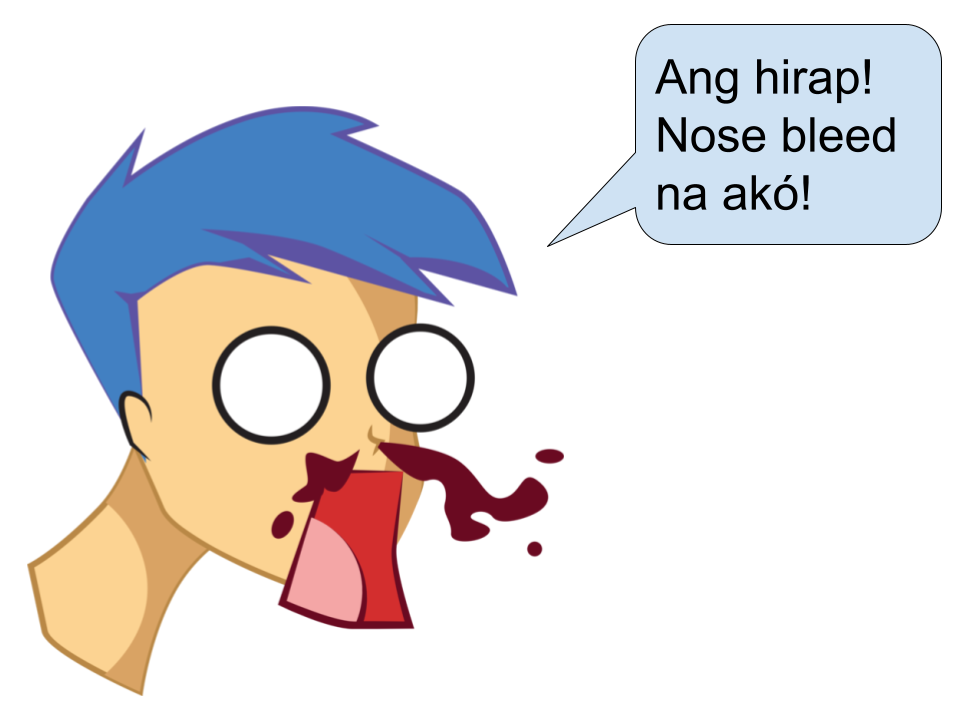How To Introduce Yourself In Tagalog
Learn how to confidently introduce yourself in Tagalog with this easy tutorial! Master common phrases & greetings. This includes self-introduction tips to start meaningful conversations in Filipino. Perfect for beginners!

I suppose you've gained the preliminary knowledge on Filipino alphabet or you've taught yourself on how to produce the sounds of each Tagalog vowels and consonants. Or maybe you're able to read Tagalog words regardless if you know its meaning, regardless if you're confident or not in using those words in your own Tagalog sentence. Or most likely you've tried reading or listening to some Tagalog texts, some Tagalog memes, some Tagalog songs and so therefore your journey in Tagalog language begins.
If you're a beginner in Tagalog language, try to impress your teacher, your language partner, your new Filipino friend, or your classmates by introducing yourself in Tagalog. This tutorial provides a script that you can memorize and it's a handy material as you find your way in increasing your Tagalog vocabulary including root words.
This post is written to give you a template on how to introduce yourself in Tagalog.
Related Lesson: Basic Greetings And Responses
Here's how I might introduce myself in Tagalog:
Mabuhay! Akó pò si Albine.
Limámpú't isáng taóng gulang. May asawa.
Akó pò ay nakatirá sa Estados Unidos.
Isá akóng gurô pero mahilig akóng maglutò.
Translation From English Into Tagalog:
- akó (pronoun: I)
- taóng gulang (years old)
- may asawa (married)
- nakatirá (verb: living, residing)
- gurô (noun: teacher)
- mahilig (auxiliary verb: love, fond, like)
- maglutò (verb: to cook)
Tell Your Age In Tagalog
I'm guessing that your age is twenty one or above...
Dalawampú't isá (21)
Dalawampú't dalawá (22)
Dalawampú't tatló (23)
Dalawampú't apat (24)
Dalawampú't limá (25)
Dalawampú't anim (26)
Dalawampú't pitó (27)
Dalawampú't waló (28)
Dalawampú't siyám (29)
Tatlumpû (30)
Tatlumpú’t isá (31)
Tatlumpú’t dalawá (32)
Tatlumpú’t tatló (33)
Apatnapû (40)
Limampû (50)
Animnapû (60)
Pitumpû (70)
Walumpû (80)
Siyámnapû (90)
In saying your age in Tagalog, mention the Tagalog number followed by the linker "na", followed by "taóng gulang". For example: "Apatnapú't anim na taóng gulang". That's just a basic way to form a meaningful Tagalog phrase.
Tell Your Marriage Status In Tagalog
"Estado sibíl" is the translation of "marriage status". The following are possible status for you:
- May asawa (married)
- Waláng asawa (single)
- Diborsiyado (divorced)
- Binatà (unmarried man)
- Dalaga (unmarried woman)
There are 3 ways to say your civil status, for example:
- Dalaga.
- Dalaga pa akó. (I'm not married yet)
- Akó ay dalaga. (I'm not married)
Another example:
- May asawa.
- May asawa na akó. (I'm already married)
- Akó ay may asawa. (I'm married)
Tell Your Occupation In Tagalog
If you're comfortable telling what you do for a living to another person, it will be nice but easy to say it in Tagalog. Here's the list of various occupations anyone can find in the world:
- Empleyado (employee)
- Waláng trabaho (jobless)
- Estudyante (student)
- Negosyante (businessman, businesswoman)
- Abogado (attorney)
- Inhinyero (engineer)
- Doktór (doctor)
- Nars (nurse)
- Gurô (teacher)
- Pulís (policeman, policewoman)
- Sundalo (soldier)
- Piloto (pilot)
- Magsasaká (farmer)
- Mangingisdâ (fisherman)
- Karpintero (carpenter)
- Bumbero (fireman)
Is your occupation not in the list? Please message me so that I can eventually update this for you.
This time now, you'll learn how to construct a simple Tagalog sentence. Let's say your "occupation" is being a student because you're still in school, these are the possible ways to say it:
- Isá akóng estudyante. (I'm a student)
- Estudyante akó. (I'm a student)
Be a smart Porenoy by saying your occupation in a well-structured Tagalog sentence. Tagalog sentences can be challenging that's why I advice you to unlearn the "Subject - Verb/Predicate" pattern because it doesn't always work in Tagalog.
Should you wish to accelerate you fluency in Tagalog, you may enroll in my One On One Premium Classes. I can't accommodate a lot of students but you may be there in the waiting list.
Add More Details About Yourself: Tagalog Verbs
Push yourself to the limit in introducing yourself while being a newbie in Tagalog. Say something about fun stuff and interesting activities. You may be doing things like these:
- Magbasketbol (to play basketball)
- Magbowling (to play bowling)
- Maggitara (to play a guitar)
- Kumantá (to sing)
- Sumayáw (to dance)
- Maglarô ng video games (to play video games)
- Maglutò (to cook)
You may find yourself "nose bleeding" as you try to compose a Tagalog sentence with verbs. Nose bleed, by the way is a common expression among Filipinos when they mean that they are in difficulty trying to study or practice a language, a math problem, or any intellectual principle.

Going back to our tutorial on how to introduce yourself in Tagalog. The next thing you wish to say is something about you always do.
If you have a good background knowledge on Tagalog verbs, notice that the list only includes those verbs under the Mag and Um groups. Also notice that these verbs are in its infinitive form. If you're either in the Upper Beginner or Lower Intermediate in Tagalog, just hang on there or simply visit my other articles here in Aralín World website because this post is meant for Total Beginners in Tagalog.
"Mahilig akóng sumayáw" means any of these:
- I love dancing.
- I'm fond of dancing.
- I always dance.
Take the sentence pattern: "Mahilig akó" followed by a verb.
Related Lesson: Issuing Commands & Suggestions In Tagalog
Test: Start Speaking Tagalog
Given the information below, what is a good script for this person so he/she can introduce himself/herself in Tagalog?
- Name: Hershey Brown
- Age: 29
- Civil Status: Single
- Occupation: Nurse
- Loves to sing
Conclusion: A Simple Tagalog Script
Remember this sequence of statements:
- Say your name in complete sentence.
- Say your age. A simple but meaningful phrase is fine.
- Say you marriage status. A two-word phrase or a single word is cute.
- Say your occupation, if you like.
- Tell what you love to do.
You may simply fill in the blanks:
Akó po si _________. ____________ na taóng gulang. __________. Isá akóng __________. Mahilig akóng __________.
This concludes our basic Tagalog tutorial. Did you find this helpful? Support our community.
Salamat po. Usap tayo.



Comments ()